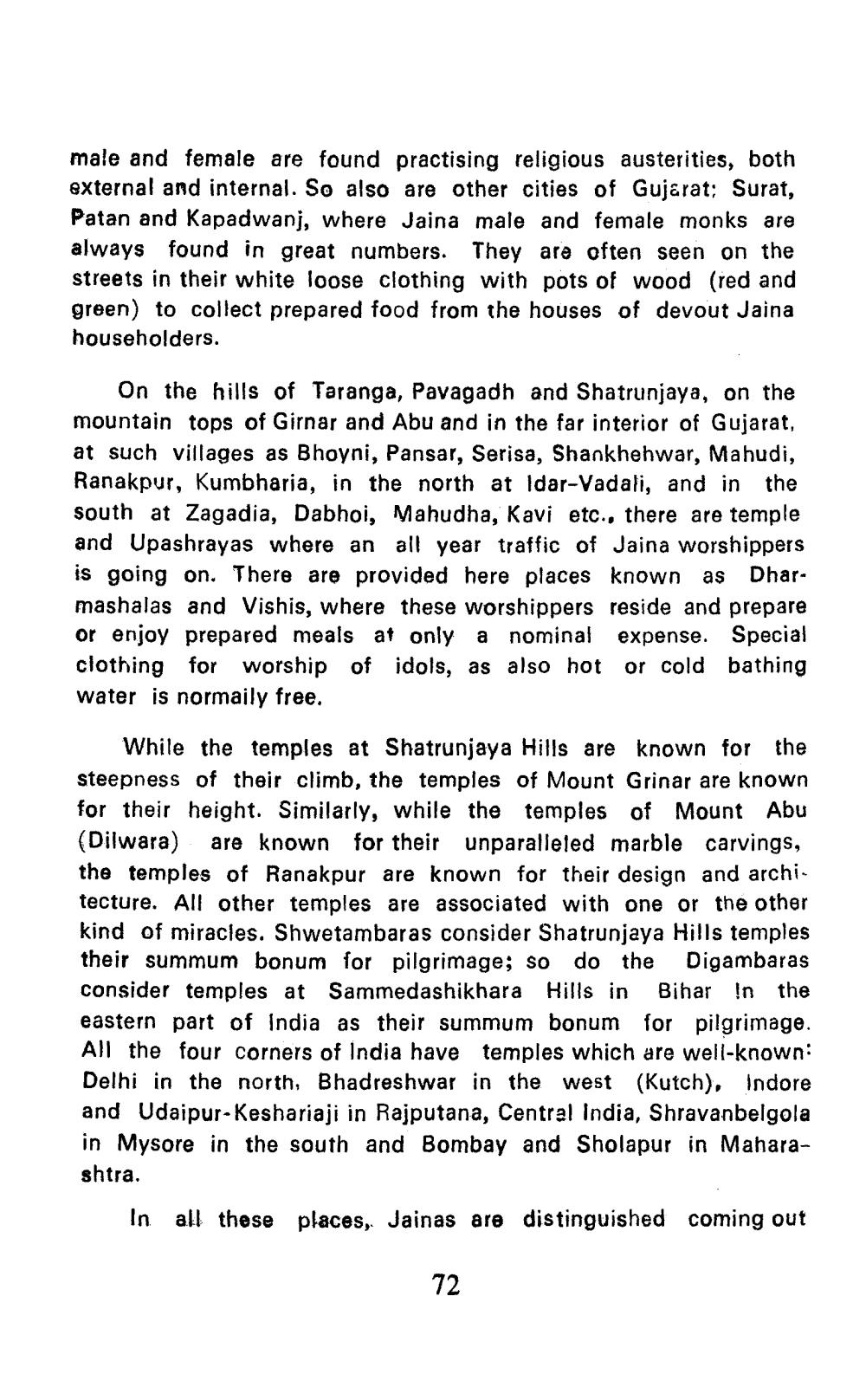________________
male and female are found practising religious austerities, both external and internal. So also are other cities of Gujarat; Surat, Patan and Kapadwanj, where Jaina male and female monks are always found in great numbers. They are often seen on the streets in their white loose clothing with pots of wood (red and green) to collect prepared food from the houses of devout Jaina householders.
On the hills of Taranga, Pavagadh and Shatrunjaya, on the mountain tops of Girnar and Abu and in the far interior of Gujarat, at such villages as Bhoyni, Pansar, Serisa, Shankhehwar, Mahudi, Ranakpur, Kumbharia, in the north at Idar-Vadali, and in the south at Zagadia, Dabhoi, Mahudha, Kavi etc., there are temple and Upashrayas where an all year traffic of Jaina worshippers is going on. There are provided here places known as Dharmashalas and Vishis, where these worshippers reside and prepare or enjoy prepared meals at only a nominal expense. Special clothing for worship of idols, as also hot or cold bathing water is normaily free.
While the temples at Shatrunjaya Hills are known for the steepness of their climb, the temples of Mount Grinar are known for their height. Similarly, while the temples of Mount Abu (Dilwara) are known for their unparalleled marble carvings, the temples of Ranakpur are known for their design and architecture. All other temples are associated with one or the other kind of miracles. Shwetambaras consider Shatrunjaya Hills temples their summum bonum for pilgrimage; so do the Digambaras consider temples at Sammedashikhara Hills in Bihar In the eastern part of India as their summum bonum for pilgrimage. All the four corners of India have temples which are well-known: Delhi in the north, Bhadreshwar in the west (Kutch), Indore and Udaipur-Keshariaji in Rajputana, Central India, Shravanbelgola in Mysore in the south and Bombay and Sholapur in Maharashtra.
In all these places, Jainas are distinguished coming out
72




